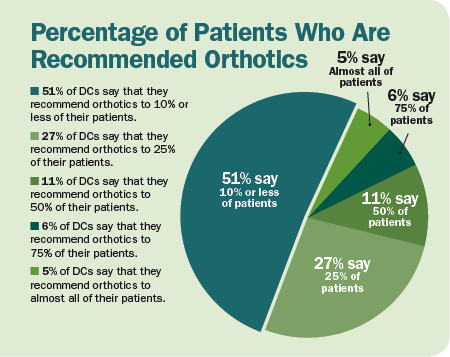Unlike many other products and services offered by doctors of chiropractic, a relatively small number of companies provide orthotics to the chiropractic profession in the U.S. There are actually more orthotics companies serving Canadian chiropractors than there are serving American chiropractors.
Eighty-two percent of doctors offer orthotics to their patients.
Unlike nutritional supplements, the vast majority of doctors only offer one brand of orthotics to their patients. This again is a considerable contrast, as almost half of chiropractors offer four or more nutritional supplement brands to their patients.
Casting vs. Scanning
A question of reliability exists in the minds of chiropractors when it comes to measuring a patient's feet for orthotics, to which there is no clear-cut winner. The conflict centers around a comparison between foam-molded casting, stationary scanning and gait scanning. Here, the profession is almost evenly divided, with less than 60 percent of the profession believing that any one of the three provides "reliable information."

Foam-molded casting was rated reliable by 59 percent of doctors, with stationary scanning believed reliable by 56 percent. Gait scanning comes in under half, with 45 percent of chiropractors rating it as reliable.
When the above percentages are compared to which form(s) of measuring the doctor is currently using, they paint an interesting picture. While foam-molded casting is believed reliable by 59 percent of the doctors, only 38 percent use it. Stationary scanning, on the other hand, is believed reliable by 56 percent of the profession and used by a close majority (51 percent), the highest percentage of the three. Gait scanning, while considered reliable by 45 percent of chiropractors, is only used by 18 percent.





